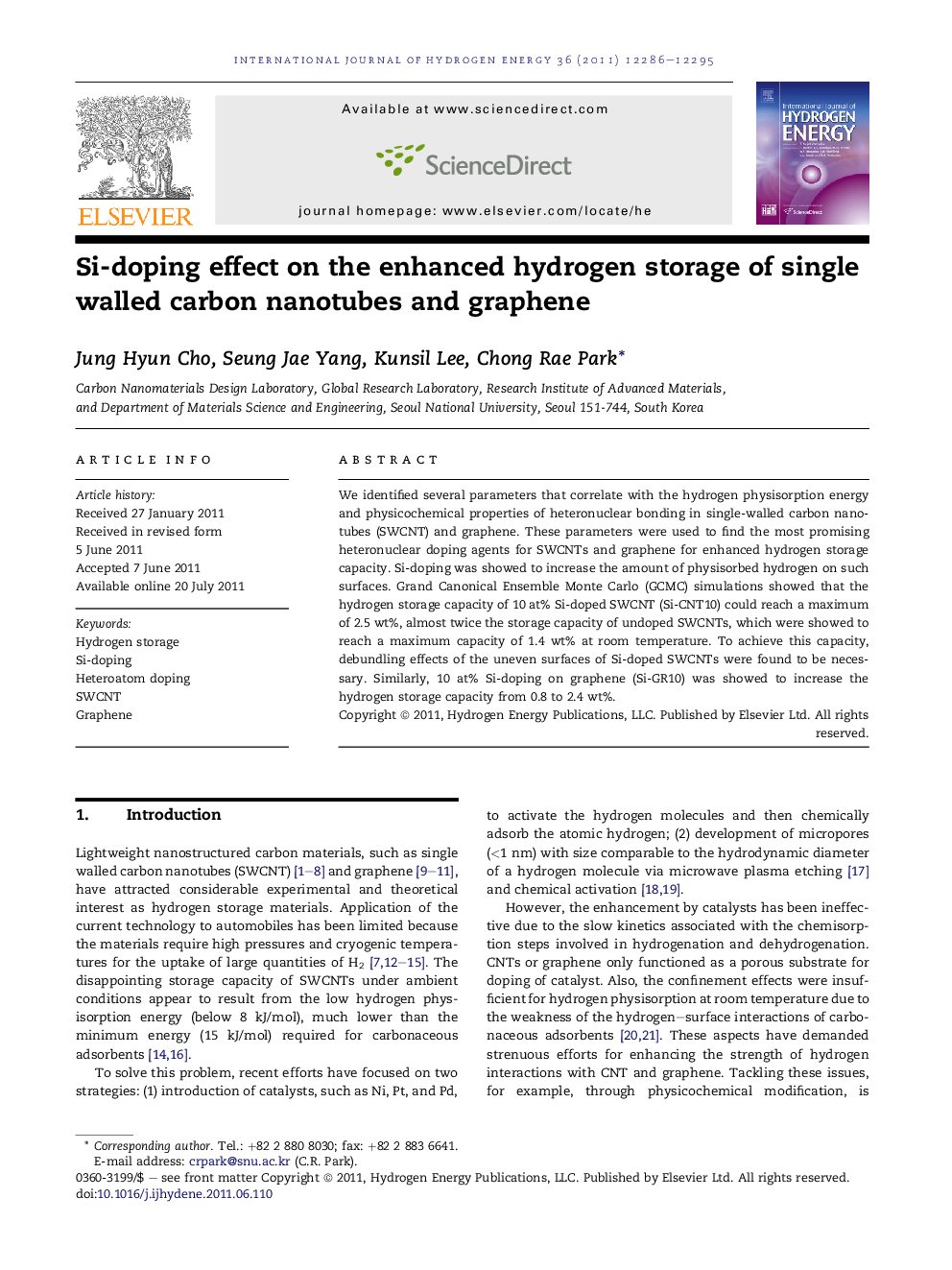| Article ID | Journal | Published Year | Pages | File Type |
|---|---|---|---|---|
| 1282429 | International Journal of Hydrogen Energy | 2011 | 10 Pages |
We identified several parameters that correlate with the hydrogen physisorption energy and physicochemical properties of heteronuclear bonding in single-walled carbon nanotubes (SWCNT) and graphene. These parameters were used to find the most promising heteronuclear doping agents for SWCNTs and graphene for enhanced hydrogen storage capacity. Si-doping was showed to increase the amount of physisorbed hydrogen on such surfaces. Grand Canonical Ensemble Monte Carlo (GCMC) simulations showed that the hydrogen storage capacity of 10 at% Si-doped SWCNT (Si-CNT10) could reach a maximum of 2.5 wt%, almost twice the storage capacity of undoped SWCNTs, which were showed to reach a maximum capacity of 1.4 wt% at room temperature. To achieve this capacity, debundling effects of the uneven surfaces of Si-doped SWCNTs were found to be necessary. Similarly, 10 at% Si-doping on graphene (Si-GR10) was showed to increase the hydrogen storage capacity from 0.8 to 2.4 wt%.
► Heteroelement-doped nanostructured carbon as a potential hydrogen adsorbent. ► We adopt three physicochemical parameters. ► Si-doping enables significantly enhancing hydrogen uptake. ► Storage enhancement depends on the physicochemical parameters of doped carbon nanostructures.
